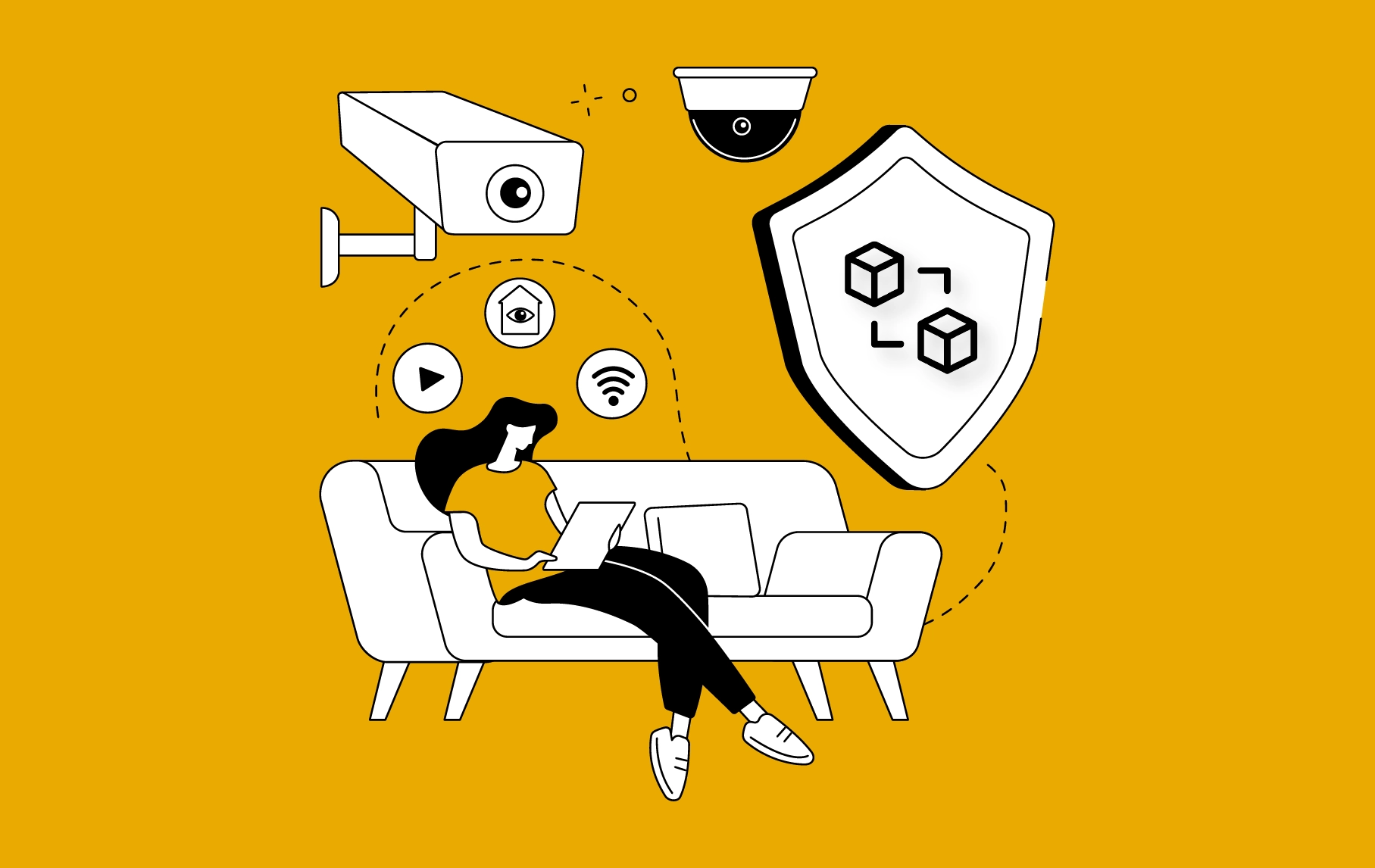- Blockchain Applications to Protect Intellectual Property
- Proof of Ownership
- Establish an IP Marketplace
- Evidence of IP Rights Usage
- Version Control in IP of assets
- Unregistered IP rights
- How Does a Platform Around Blockchain Technology Patents Work?
- Step 1: Creators Sign Up on the Platform
- Step 2: Creators Upload Their IP on the Blockchain Network
- Step 3: Consumers Raise a Request to Use the Work
- Step 4: Patent Management Entities Enter the Blockchain Network
- How Do Different Countries Use Blockchain for Copyright Protection?
- Real World Example of Companies Using Blockchain to Protect Intellectual Property
- Blockai
- Mediachain Lab
- Ujo Music
- How Can Appinventiv Help Protect Your IP Rights?
- FAQs
The massive influx and easy, inspired generation of data, media, and codes has brought the focus of lawmakers and businesses on patents and IP protection rights. Their demand is similar – the ideas and data created by a party (could be business or users) should not be copied and passed as own by someone else.
In response to this demand, the reliance is growing again on the technology they have already used for data storage and transmission: Blockchain.

Since blockchain works on a time-stamped, immutable chain of data and information, it fits perfectly in the process of tracing. This has not been unnoticed by IP registries and government agencies like the European Union Intellectual Property Office (EUIPO), which is looking into the potential of blockchain IP protection.
In this article, we will dive into the role of blockchain technology and intellectual property, focusing on how the technology can be used by industries aiming to protect their work, data, and ideas.
Blockchain Applications to Protect Intellectual Property
The applications of blockchain in intellectual property management are wide-ranging and can be seen across patents, trademarks, and every other form of IP rights. Let us look at some of the key use cases.

Proof of Ownership
If the creator wishes to secure their rights, they can register the IP to the patent office. Additionally, if it is copyright, they would have to get their own evidence as a proof of ownership. The fact that in the internet era, anyone can download pre-created content and state it as their own makes exercising copyright very challenging.
To solve this, the Bitcoin protocol can be used for assessing IP ownership through three elements of ownership. First, there are the assets’ antecedents. Considering that blockchain offers an immutable record, it is used to list the “original” products that can be differentiated from counterfeit. The second is using blockchain to create IP ownership certificates. The last is using blockchain to dispute a later claim. This can be achieved by showing the earlier claim’s timestamp.
Establish an IP Marketplace
Another application of blockchain intellectual property can be seen in a marketplace where the creators can list the inventions in the form of ledgers with basic descriptions. This marketplace can also be used to find licensees for invention know-how.
Here’s an overview of what the intellectual property blockchain marketplace would look like with its three major functionalities –
- IP registries – IP offices can use blockchain to register IP assets and create a record of the assets’ lives.
- IP exchange – Blockchain can be used to transfer IP assets and as a means to attest, authenticate, and validate the properties’ transfer.
- IP payments – The technology can also be used for executing payments for the transfer or exchange of assets.
Evidence of IP Rights Usage
The patent data are generally distributed among national and international authorities operating at different efficiency levels and policies. This, in turn, makes working with global patent data cumbersome.
To simplify the process, a blockchain protecting intellectual property is brought to use. Technology makes it possible to develop ownership records to track ownership status and the usage of rights.
For example, every time a trademark gets used, the action can get registered in the blockchain, and the IP office can be notified in real-time. This can provide time-stamped, solid evidence of the trademark usage throughout its life.
Version Control in IP of assets
As the copyrights and patents evolve in their lifetime, digital assets also produce several versions of themselves.
To store all the information immutably, businesses can utilize another use case of blockchain intellectual property protection. The technology can link all the versions like an “end-to-end” lifecycle maintenance of the asset.
For example, at present, defensive publications are used to prevent the patent of innovations by disclosing all the assets at an earlier date. Here, blockchain could also serve a similar function by giving every file a unique fingerprint, removing duplicates, versioning every upload, and indexing them so that the information can be easily traced.
Unregistered IP rights
The combination of blockchain and intellectual property can also assist with registering unregistered IP rights as it can easily offer evidence of the rights management information, time of creation, and jurisdictional requirements. A careful consideration, however, should be given to the platform’s design.
A blockchain property rights platform where any member can upload rights management information in the form of a time-stamped entry would be useful only when an authoritative third party like an IP office or a Collective Management Organization is involved. Moreover, the right holders might also be account holders, meaning that the Registry will not only record but also enable IP rights transactions. Ultimately, for blockchain IP protection to reach its full potential, a huge number of owners will need to use it and will have to cover a sufficient amount of copyright work.
These use cases of blockchain intellectual property protection are a sign of how big and impactful the technology can be for the industries focused on protecting innovations and creators’ rights. To understand blockchain for copyright protection better, let’s look into the working of a patent platform based on the technology.
Also Read: An Entrepreneur’s Guide on the Blockchain Technology and Its Uses
How Does a Platform Around Blockchain Technology Patents Work?
Before we get to the working of a platform that combines blockchain and intellectual property, let us look at the key users.
- Patent Creators: Users having the ownership of original data, for example – researchers, writers, artists, musicians, photographers, etc.
- Patent Consumers: Users who are looking to consume the content and support the creator’s work.
- Copyright Managing Entities: Users in control of protecting the Intellectual Property.

Step 1: Creators Sign Up on the Platform
Creators sign up on the intellectual property blockchain platform to patent their work. They then add the following information to register their profile.
- Name
- Address
- Contact No.
- Date of Birth
- Designation
The fact that their patent and personal information is going on the blockchain, their personal data security is assured with the guarantee of zero data disclosures.
Step 2: Creators Upload Their IP on the Blockchain Network
Once the blockchain platform sign-up is complete, an intellectual property is added, to which the patent application will be added. The creator can then easily apply and upload all the information related to IP on the network.
- Name of creator
- Name of owner
- Title
- Keywords
- Abstract
- Classification
After the data is saved on the network, blockchain protecting intellectual property ensures complete auditability and traceability to prevent data from getting duplicated or manipulated. After the patent gets added to the blockchain, it can also be made visible to every network member.
Step 3: Consumers Raise a Request to Use the Work
Consumers looking to use the content also register themselves on the blockchain IP protection platform. Once their profile is created and verified, they can request the creators to give them access to their patented content.
Before approving the request, a Smart Contract gets created that enables the consumers to access information in return for a fee or tokens. So, once the creator approves their request, an NDA gets generated and signed along with the smart contract that ensures all the terms and conditions are read and will be filled.
Step 4: Patent Management Entities Enter the Blockchain Network
After the transaction has taken place, there can be a situation where disputes might arise, such as –
- Confidential information gets shared
- Proof of authorship is questioned
- IP rights get transferred
- Defensive publications are made, etc.
In these cases, the creator can report the issue to the patent office or consult a lawyer in the same blockchain network. Both the patent office and lawyers will be able to use the blockchain intellectual property protection platform to see the time-stamped auditable records and prove the provenance and originality of the content.
Now that we know the role of blockchain and intellectual property, along with a high-level view of what a technology-based IP protection platform would look like, let us see how similar applications are being used across the globe.
How Do Different Countries Use Blockchain for Copyright Protection?
In Europe, several government agencies and IP registries, like the European Union Intellectual Property Office (EUIPO), are involved in the research and promotion of blockchain capabilities within the sector.
In India, IPO (Indian Patent Office) is working on blockchain and innovative technologies like IoT and AI to power a smooth patent process. The country is planning to build a Blockchain-AI-powered ecosystem for managing IP protection, intending to build an efficient, streamlined, and faster procedure.
A legal architecture for blockchain IP registry to safeguard and commercialize ideas is one of the earliest initiatives the IPO is taking for the Indian IP sector.
In the US, blockchain is being used to protect American businesses from IPR theft by testing the imports. The U.S. Customs and Border Protection (CBP) and the Department of Homeland Security’s Science & Technology Directorate have recently built a proof-of-concept (PoC) of a blockchain platform to test imports. It is planned that the trade secrets and personal data will be kept safe through encrypted keys, and the blockchain digital intellectual property protection platform will operate as an immutable ledger that will record all the trade transactions.
In Thailand, the Ministry of Commerce launched a feasibility study to explore the applications of blockchain in IP registration. The Thai Trade Policy and Strategy Office (TPSO) worked in sync with the British Embassy to analyze the study and then translate it into action plans for further development.
Real World Example of Companies Using Blockchain to Protect Intellectual Property
Still unsure about the importance of blockchain intellectual property protection? Seek inspiration from the companies leveraging blockchain for copyright protection.

Blockai
Blockai, a blockchain-based company catering to the diverse needs of writers and artists, utilizes timestamps to document the creation of new works and prevent copyright infringements.
Mediachain Lab
Mediachain Lab uses blockchain for its stock photo service. Users can find photos or upload their own to see who made them, where they’re from, and what they’re about. The best part is when you use these photos, the original creators get credit automatically.
Ujo Music
Ujo Music, a London company, leverages blockchain technology to empower musicians to self-publish their music online without relying on large labels or music publishers. Blockchain facilitates the creation of an internet infrastructure where artists can manage their marketing and data independently.
You may like reading: Business Benefits of Permissioned Blockchains
How Can Appinventiv Help Protect Your IP Rights?
Appinventiv is a leading blockchain software development company, helping businesses across industries develop, deploy, and upgrade dApps and blockchain networks for various purposes.
We have run multiple hypothesis tests around blockchain and intellectual property in our R&D department that focuses on exploring the multitude of applications of blockchain software development. Along with this, we are also working with a patent agency to set up their IP marketplace where creators can upload their work, and users can request to commercialize it in return for a fee.
Looking for a similar situation or wish to transform the patent industry with your revolutionary idea? Get in touch with us today and learn how we can help you protect your IP rights. With a team of 1200+ tech evangelists who understand the nitty-gritty of blockchain intellectual property protection, we can be a one-stop solution for all your blockchain needs.
FAQs
Q. What is the future of Blockchain for copyright protection?
A. Given the security, transparency, and immutability of blockchain, the technology can protect digital assets. Across the globe, legislative bodies and governments are already gradually recognizing and integrating blockchain as a compelling proof of evidence in the realm of intellectual property.
Going forward, blockchain could be embraced as a foundational technology by a majority of governments. This shift has the transformative power to unify the entire intellectual property system.
Since Blockchain development is still in its initial stage, we will witness more evolved use cases of Blockchain for IP protection in the near future.
Q. What are the benefits of blockchain intellectual property protection?
A. There are several benefits of using blockchain to protect intellectual property. Some of the most remarkable benefits of blockchain intellectual property protection are:
- Artists can quickly upload their works to blockchain platforms, unlike the Copyright Office registration process, which may take weeks or even months.
- Blockchain offers copyright holders greater control over their works, especially for digital creations.
- Creators can manage and protect their intellectual property worldwide without relying on centralized authorities.
Q. How can blockchain protect intellectual property?
A. Blockchain can protect intellectual property by providing a decentralized, transparent, and tamper-resistant platform for recording and verifying ownership of creative works. Blockchain establishes indisputable proof of creation and ownership through features like immutable ledgers and smart contracts. It enables instantaneous and global registration of intellectual property, eliminating the risk of unauthorized use or disputes.


- In just 2 mins you will get a response
- Your idea is 100% protected by our Non Disclosure Agreement.

How Much Does It Cost to Develop a Crypto Wallet App Like Metamask?
Key takeaways: Developing a MetaMask-like crypto wallet can cost anywhere from $30,000 to $250,000+, depending on the complexity of features and integration. The cost breakdown includes development, security, integration with blockchain networks, and ongoing maintenance. A customized wallet opens up new revenue opportunities, brand differentiation, and long-term business growth. Since its launch in 2016, MetaMask…

How Much Does it Cost to Build a Blockchain App in the UAE?
Key takeaways: The UAE blockchain market is rapidly expanding, with the BFSI sector capturing over 50% of the market share. As blockchain adoption accelerates, development costs in the UAE range from AED 55,000 to AED 1.85 million, depending on app complexity and features. Factors such as platform selection, security measures, and third-party integrations directly impact…

How Blockchain Integration Is Optimizing Business Processes in Dubai
Key takeaways: Blockchain is a strategic enabler in Dubai, transforming traditional business workflows by enhancing efficiency, transparency, and automation beyond cryptocurrency applications. Dubai’s supportive regulatory environment and government initiatives (e.g., VARA, Dubai Blockchain Strategy) create a clear, innovation-friendly framework, accelerating blockchain adoption. Integration with legacy systems through modular blockchain solutions enables enterprises to modernize operations…

















